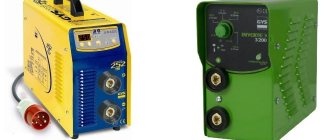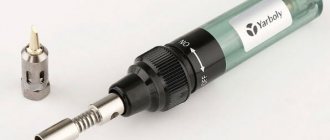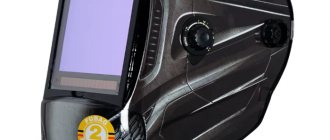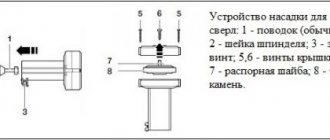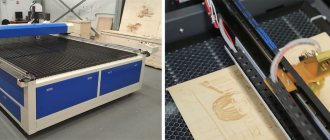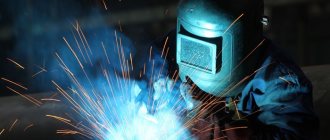Hoist manufacturers
According to the rating of manual chain hoists, which are popular among online store buyers, the most common products are from the following manufacturers:
- Tor Industries;
- SPARTA;
- BISON;
- CALIBER;
- HSZ.
It should be understood that all products manufactured under European or domestic brands are most often produced in China. However, the Chinese industry today has reached such a level of development that it is no longer possible to distinguish the quality of a European hoist from one made in China.
Electric hoists and their advantages
Electrically driven GP equipment or hoist is a motorized equipment equipped with an electric motor or gear motor for quickly lifting and lowering loads.
Peculiarities:
- a drum is responsible for winding the cable, less often a chain;
- load capacity ranges from 300 meters to 20 tons;
- lifting height – from 2 to 30 meters;
- installation options – stationary or hanging from a mobile console/trolley.
Important! Depending on the installation method, the functionality of the electric hoist changes. Thus, the operation process is simplified if the GP equipment was attached to a trolley, and it, in turn, was attached to a sliding beam.
Types of chain hoists
Manual chain hoists are most often created on the basis of two types of mechanisms: gear and lever.
- Gear hoists. The main unit in them is the hoist block in which the gearbox is located. The input gear of the gearbox is connected to a control circuit, through which the operator transfers the motion energy to the hoist mechanisms. The output gear is connected to the load chain. The gearbox reduces the physical load required to set the hoist hook in motion. In addition, the gear transmission reduces the load on the lift mechanisms, increasing its service life.
- Lever hoists. Structurally similar to gear ones, however, devices of this type receive mechanical energy not through a control circuit, but through a lever. Lever lifts are more compact, but models with significant lifting heights are extremely rare among them.
There are also worm gear manual hoists. However, due to the high cost and complexity of the design, such models are gradually leaving the market.
Video - How a chain hoist works and what it consists of
Manual
Manually driven hoists are available in worm, lever and gear models.
Manual gear hoists
They can be located at any height, ensuring the movement of the hook up and down under the influence of the physical force of an operator located at some distance - under the action of rotating a special pulley or pulling a closed traction chain. The device must be connected strictly according to the chain hoist installation diagram. To lift a load, the operator only needs to secure the upper locking hook into the traction ring. The device of the manual hoist allows it to be attached to a carriage on rollers on an I-beam. The operator can control the equipment from ground level using a special rod up to a height of 12 m, while models with worm and lever gears are controlled from a certain height.
Manual lever hoists
The advantage of lever hoists is the absence of a drive chain, which simplifies their operation. Using this equipment, a person lifts and lowers a load using a lever handle. The operator must be on top to ensure that the hoist is maintained in a raised state and it is convenient to lower the load. The design of lever hoists allows them to be used at temperatures not lower than -40°C, the weight of the products being understood is no more than 3 tons, the lifting height is no more than 9 meters. Violation of these requirements will lead to premature wear of cables, bearings, bolt fastenings and failure of the mechanism.
Manual worm hoists
The operation of the device is ensured by a worm gearbox. Its presence allows you to obtain the greatest traction, ensures reliable fixation of the lifted products, but at the same time limits the lifting speed, and also significantly makes the lifting equipment itself heavier. The following types of worm gear devices exist:
- Stationary. They are used for installation and repair, and can be included in the design of a single-girder crane mechanism. The lifting height can reach 12 m (in some cases - up to 24 m), load capacity - from 1 to 8 tons. The advantages of this type of hydraulic lifting machine include a relatively low price;
- Mobile hand worm gear. The design of the chain hoist allows you to lift loads weighing up to 10 tons to a height of up to 24 m;
- In explosion-proof design. Used in facilities where there is a risk of explosions. In terms of load capacity and lifting height, they do not differ from the previous two types, but have much more weight.
How to choose a chain hoist supplier
Before ordering a hoist, you should pay attention to some information regarding the selected supplier:
- duration of work in the niche of lifting devices;
- participation in legal proceedings;
- availability of reviews;
- whether the company operates as an official distributor of hoists of the brand you are interested in;
- Is warranty repair and service possible?
If you have doubts on any points, it makes sense to consider working with another supplier.
Main characteristics
- Load capacity. The main parameter that determines the maximum weight of the lifting load. The minimum value is 100 kg, the maximum is 20 tons. You can calculate the optimal load capacity as follows: add 30% to the maximum indicated in the technical specifications of the model. This will prevent overload and damage to the hoist.
- Weight and dimensions. Dimensions depend on the design, purpose and capabilities of the equipment. The more massive, the more durable. Weight ranges from 100 to 990 kg. The equipment is compact in size, so its length does not exceed 2 meters, width - 10 cm. The parameters of individual structural elements are indicated in the technical description of the specific model.
- Lifting height. It is selected taking into account the height of the ceilings of the room or the individual needs of the developer. The minimum value is from 12 meters.
- Ascent speed. Indicates how quickly the load is lifted to the desired point. The starting mark is 5 meters per second.
- Operating voltage. It's power. The performance of the equipment depends on it. The higher the indicator, the more durable the hoist. Power varies from 500 to 2000 W.
Tips and tricks when choosing chain hoists
Lifting equipment is purchased with long-term use in mind. To avoid mistakes, it is advisable to pay attention to a number of points before purchasing.
- Load capacity. You should not limit yourself to the maximum weight of current cargo. It is quite possible that tomorrow more powerful lifting mechanisms may be required. Therefore, it is better to purchase a model with a carrying capacity reserve of 20-30%.
- Lifting height. As a rule, manual hoists are produced for lifting loads to a height of 1.5-9 m. There are models that lift the hook to 18 meters or more. It is worth choosing the model that will most accurately match the parameters of the working site in terms of lifting height.
- Presence of anti-corrosion coating on metal surfaces. The body of the hoist side, as well as the chain, must have a protective coating of powder paint or galvanization. This will allow you to operate the equipment outdoors.
- Safety certificates. Their presence will confirm the safety of the device for personnel.
In addition, the availability of service centers is important. Like any mechanism, a manual hoist requires regular maintenance and sometimes repair. A nearby service station will speed up service and reduce losses from equipment downtime.
Electric (telphers)
The use of an electric hoist significantly speeds up and simplifies the performance of lifting operations with loads, and helps to increase labor productivity. Any hoist model can be used as an individual lifting mechanism or as part of an overhead, console or gantry crane. The design of the electric hoist allows it to be used for lifting, lowering and moving products within the permissible load capacity and the length of the rail track on which the equipment is mounted. Depending on the presence/absence of a movement mechanism, hoists are divided into stationary and mobile. The general design of the equipment provides for the presence of switches for the upper and lower positions of the hook suspension, a brake, and an emergency switch for the upper position of the suspension. The equipment is designed for use in enclosed areas of workshops and warehouses in the temperature range from -20 to +20 °C. Some device models can be used outdoors at temperatures from -40 to +40 °C. In the latter case, additional protection of the equipment from possible atmospheric influences must be provided using a metal casing. To use equipment in aggressive environments, fireproof and explosion-proof models must be used.
Electric hoist series TE (Russia)
This is a common class of highly reliable lifting equipment, the design of which involves the use of a combination of movable and fixed blocks and pulleys. The lifts move horizontally along the I-beam, ensuring the movement of loads in the vertical plane of loads due to the unwinding and rewinding of a chain or cable. Russian electric hoists of the TE series are highly practical and efficient and are suitable for working with loads of various weights. The equipment has been produced in Russia for 70 years, and every year the designs of the devices are only further improved and the model range is expanded. The TE series hoist is used in a variety of areas - from small auto repair shops to large industrial facilities. The equipment is popular in enterprises involved in transportation and construction sites. The mechanisms are capable of operating in a temperature range from -40°C to +40°C in enclosed spaces and under cover. Explosive models are available.
Electric hoists CD series (China)
Chinese CD series electric hoists combine high performance, power and affordability. With their help, you can move loads in a horizontal direction - as a rule, along a monorail track installed under the ceiling of the room. The equipment can be used at temperatures from -25°C to +40°C with a humidity not exceeding 85%. The devices are designed to work indoors or under a canopy. It is prohibited to use them to move explosive and toxic substances, molten metals, etc.
Electric hoists T10 series (Bulgaria)
Bulgarian hoists of the T10 series are very popular in Russia and the CIS countries. The equipment combines reliability, durability, has a simple design and a relatively low price. In the standard version, the mobile electric hoist of the T10 series has a built-in travel brake and thermal protection of the lifting motor. It is possible to adjust the width of the trolley, which allows you to install the hoist on a monorail track of different widths. The lifting capacity of the equipment is from 0.5 t to 12.5 t. At the request of the client, Bulgarian hoists can be equipped with a micro lifting speed or micro moving speed, a load limiter, etc. The hoist is designed for use both indoors and outdoors.
Mini electric hoists
Equipment of this class is designed to work with loads weighing from 125 kg to 1 ton. Movement is carried out along a suspended monorail track with low intensity. The advantages of this equipment include compact size, light weight, the ability to use it from a 200V network and affordable cost. The devices are presented in stationary and mobile models. Lifting height is up to 12 m. The mini hoist can be used as part of an overhead, jib or overhead crane.
Technical description
- A device that includes several components at once must, by its nature, be very durable and reliable. But the strength declared by the manufacturer in such a device is not always available and in some cases simply does not correspond to reality. It is for this reason that it would be best for the characteristics of the device to indicate the alloy from which the gear was created . The best option in this case would be an alloy of material for the gear - alloy steel, which carries from 0.1 to 0.6 percent carbon.
- It is best to use galvanized or blued chains , that is, those that are sufficiently protected from corrosion. The device is most often closed from impacts on the mechanisms using a special and strong casing.
- All hoists, including gear type ones, come in completely different models, each of which has a certain load capacity. The latter will most often correspond to other parameters, for example, the overall diameter of the chains, their number in one block and the weight per individual meter, as well as the weight of the hoist itself and its overall dimensions. The last two characteristics must be taken into account together with the chains, that is, from the top hook (hook) to the bottom (traction) at the highest point of the device. If we talk about the level of the total height to which it is worth lifting the device, it will vary from 3 to 12 meters for various standard hoists. All characteristics can be seen and examined in more detail in a special table of devices.
Reviews
Mikhail: “We use an electric hoist DENZEL TF-800 52014 in the workshop. It works well, quickly lifts and lowers loads. It’s easy to control the equipment, since the remote control is not lost and is always on the wire.”
Andrey: “I have my own car service center, so several hoists are installed on the territory. I would especially like to mention the Hammer Flex ETL500 model, which helps to transfer minor car parts. In operation for more than 4 years. During this time, the winch showed only its good side.”
Stationary and mobile hoists
Stationary hoists are limited in their capabilities. They are capable of handling loads in only two directions. Attached to the ceiling or wall using a hook. Well suited for use in narrow spaces.
Mobile – functional and popular designs. Mounted in two ways:
- On the rotary console. The equipment is rotated manually, using a flexible load-handling element of the hoist, or by electric drive. Electric consoles are especially popular, since they are controlled via a remote control. The technique moves up and down, left and right.
- On a mobile cart. It, in turn, is fixed to the crane-beam. The beam is equipped with trolleys - movable wheels for free movement back and forth. This option opens up possibilities such as lifting and lowering a load, moving left and right, forward and backward. Controlled by two remote controls.
Reference. The beam crane is considered a junior modification of the overhead crane. It helps lift heavy loads. For example, containers with molten metal or liquid.
Special drive shaft. Drive chain and drive wheel
The hoist itself is suspended above the load itself, which must be lifted using a special trick. The lifting chain will be independently attached to the load. At the moment when we pull the drive chain, the drive wheel itself begins to rotate and rotates along the drive shaft, which begins to drive the gears, and at this time they turn the wheel of the lifting chain itself, which lifts the load itself.
It is worth taking a closer look at how gears produce the greatest concentration of lifting force in themselves, which is transmitted to the lifting chain. This drive chain is attached to a specialized segment on the drive wheel itself. The moment we pull, it begins to turn. The drive wheel is attached to a special friction plate, which is screwed to the ratchet.
At the moment when the plate and the ratchet begin to rotate together, the lock will fall into the teeth of the ratchet, preventing the wheel from unscrewing in the other direction under the influence of the weight of the load itself. With each process of transferring forces from one wheel to another, the force received from the drive chain increases several times.
The drive wheel is also mounted on the transfer shaft. As soon as the wheel begins to turn, it begins to drive the entire shaft. At the other end of this shaft there is a small and toothed gear, on which there are about 5 teeth at once. At the moment when it begins to make turns, the force transmitted by the action of the chain through a special drive wheel begins to increase rapidly. In this way, it increases in a special ratio of 7 to 5. A small toothed gear begins to drive the other two gears from the remaining wheels simultaneously.
Thus, the driving force of a small gear begins to be evenly transmitted by two wheels at once instead of one. A small gear immediately begins to drive 18 teeth, which are located on the remaining wheels. In turn, either of the two wheels has a small wheel at the back, which includes four teeth at once, increasing the total impact force by 18 to four.
These small wheels begin to drive a second wheel with 19 teeth in it, which begins to concentrate all the force on several links in the lifting chain attached to the last drive wheel. With the help of all these large and small wheels, the force from the drive traction can increase as much as thirty times.
A manual hoist is a fairly simple mechanism. It consists of a number of gears and two chains. A chain hoist makes an increase in total force as a result of the process of transforming a small number of forces that are applied over an overall length into a larger force that is applied over a smaller length.
